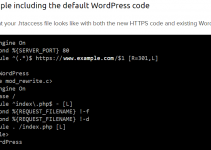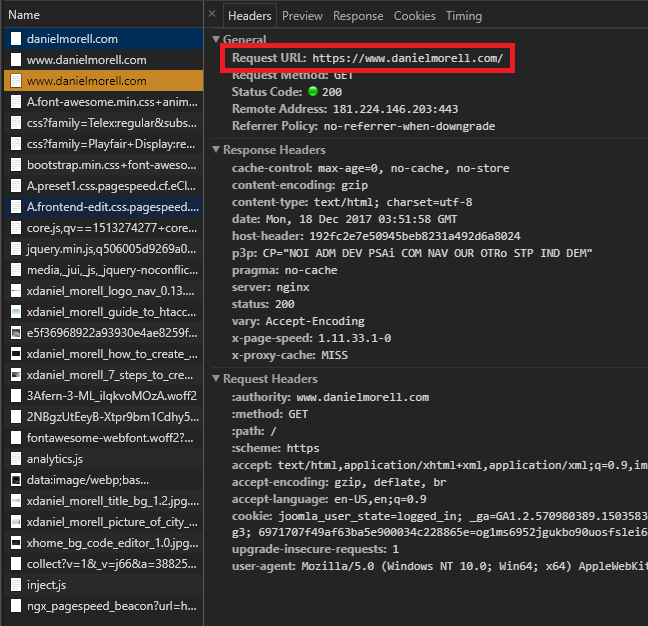
- #HTACCESS SAMPLE REWRITE DOWNLOAD FULL#
- #HTACCESS SAMPLE REWRITE DOWNLOAD CODE#
- #HTACCESS SAMPLE REWRITE DOWNLOAD PASSWORD#
Redirect URLs: RedirectMatch 301 /old-page/ You can choose to redirect anything from a single URL to an entire folder or even another domain: htaccess file since it makes redirection very simple. This is one of the most common uses of the. At the same time, it restricts jamesdean’s access to only GET and POST functions.
#HTACCESS SAMPLE REWRITE DOWNLOAD CODE#
The code above allows access to the specified directory only for user jamesdean. For example: AuthUserFile /directory/.htpasswd The code in the file will specify various allowances or restrictions.

htaccess file in each directory you want to secure. To restrict access to specific directories, you will need to place one. When storing the password, it will be hash encrypted – not stored in the form you enter it.īy default all directories are open access.
#HTACCESS SAMPLE REWRITE DOWNLOAD PASSWORD#
Once you hit the enter key, you will be asked to provide the password for the username you just defined. To create the file and add a user: htpasswd -c /directory/. The latter is where you can store specific user names and their access permissions to specific areas. htaccess can work with another file called. Now that you’ve protected the file, let’s take a look at what else it can be used for. If you do this, anyone trying to view it will simply be shown an error message. Open the file and add the following code: Unless this is done, anyone will be able to view your. The first thing you need to do though, is to secure the file. htaccess is quite versatile and can be used to achieve a number of things. Nginx does not make use of this file.Īs mentioned. htaccess coding in context of Apache web server since it is commonly used. htaccess Codeįor the purposes of this guide, we will be looking at. htaccess in these locations, then try to enable the ‘show hidden files’ option in your file manager settings or File Transfer Protocol (FTP) client that you are using. When using your web hosting file manager, this will generally be Most files that start with a ‘.’ are hidden files.If you can’t see. Most of the time though, the file should be located in your root folder. If you can’t locate yours – don’t panic, it might simply be hidden. Just because it has a use, doesn’t mean that all web hosting plans come with the. At the same time, it can also be used to handle redirects, ban specific IP addresses or IP ranges, or even work with custom error pages.

htpasswd files you can exercise a high degree of directory access control for multiple users. It is used by many (but not all) web servers in the market such as Apache. Using it, you can password protect specific directories on your web hosting server. htaccess, or hypertext access file, was originally meant for users to control file access. htaccess can be used for a number of things, that doesn’t mean it always should be. It is meant to serve as a basic introduction and outline for newer users. This guide isn’t intended to be a comprehensive documentation on. Although originally designed for file access control at the directory level, it also has a number of other uses. Thanks to toscho for assisting here, some small-talk in chat.htaccess files are plain text documents allowing you to manage how your web server responds to requests. String $after: Optional, default is 'bottom'. String $regex: Regular Expression to match request against. Void add_rewrite_rule (string $regex, string $redirect, ) See: WP_Rewrite::add_rule() for long description.

htaccess -file exists - not 100% of their inferences because not well-documented and cannot understand the naming there but the central message is probably that the safe way to maintain the rewrite rules is to use the WP_Rewrite API, WP may change in the future.įor example, a simple Apache-rewrite RewriteRule ^hello$ Layouts/hello.html is apparently something like add_rewrite("^hello$", "Layouts/hello.html"), haven't tested but tried to follow the API below: add_rewrite_rule (line 19) The code here has some conditions if the.

htaccess -files - things may change even with different WD -versions! So use the API. So you must use the API to do the changes, not fully sure what it means but I think it means you cannot trust in your hard-coded.
#HTACCESS SAMPLE REWRITE DOWNLOAD FULL#
The full functionality of a front controller does not exist, meaning you can't define how the template files load based on the rewrite rules. You can add rules to trigger your page view and processing using this component. Anyway, do not mix Apache's rewrite rules with WP's rewrite rules although the naming of WP is probably from Apache's equivalent. There I found the key Class WP_Rewrite here, the official is at the best misleading and marketing. Use the Freenode's #wordpress to find the appropriate documentation, usually in the /topic.


 0 kommentar(er)
0 kommentar(er)
